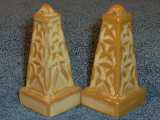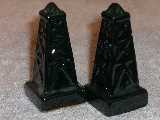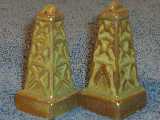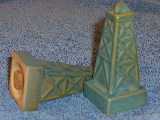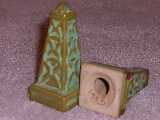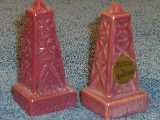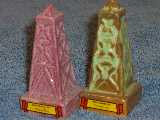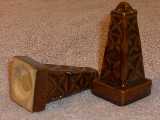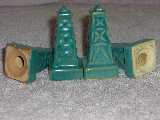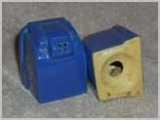

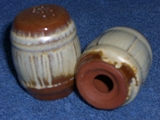
Oil Derricks, 49H: Type 2
1950-1953
The war years and early post-war years were tough times. The miniature craze of 1942 had quickly died as post-war imports resumed. Frankoma's success with colored dinnerware, however, called for the plant expansion of 1948. The expanded production made room for more shakers. Having re-issued the snails and teepees in 1948, with the 1950 catalog Frankoma resumed production of the cats and oil derricks.
Despite the tightening market for American pottery, and especially miniatures, the oil derricks stayed in the line until 1960. The Type 2's, however, span only three years of production. The number available to collectors is limited.
Learning from the experience of re-issuing the teepees, Frankoma re-made the oil derrick mold prior to starting production. The new mold had a deeper well-defined plug depression with sharper edges, providing more room for the cork.
All of the Type 2 oil derricks are made with Ada clay. The main Ada clay in use around 1950 is very light in color and is easily distinguished from the earlier clay. Some of the Type 2's were also made on the dingy Ada clay that immediately preceeded the switch to Sapulpa clay, and some may be on the transitional Ada clay.
None of the Type 2's will have base marks as Frankoma did not use them on shakers after about 1943.
